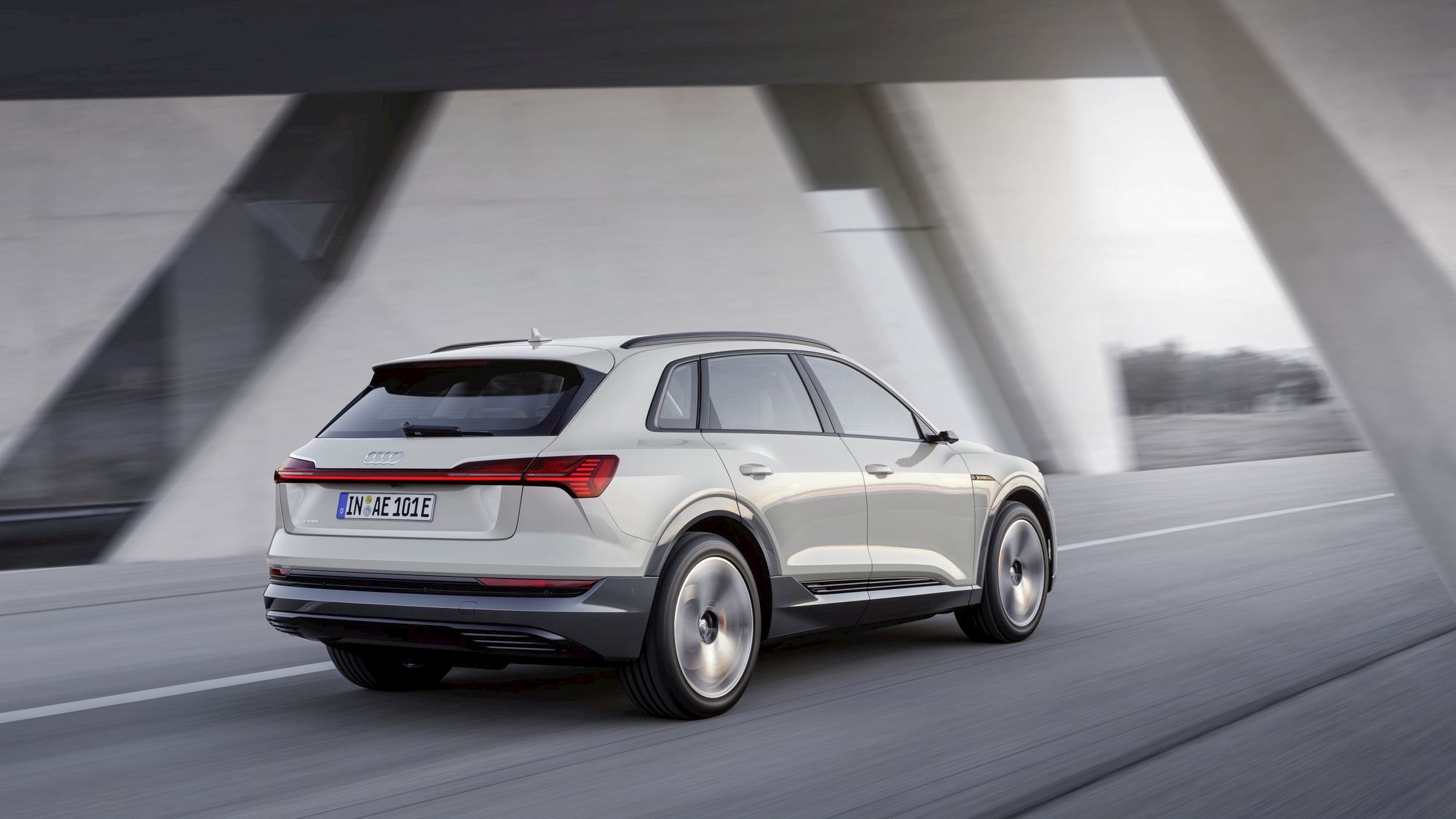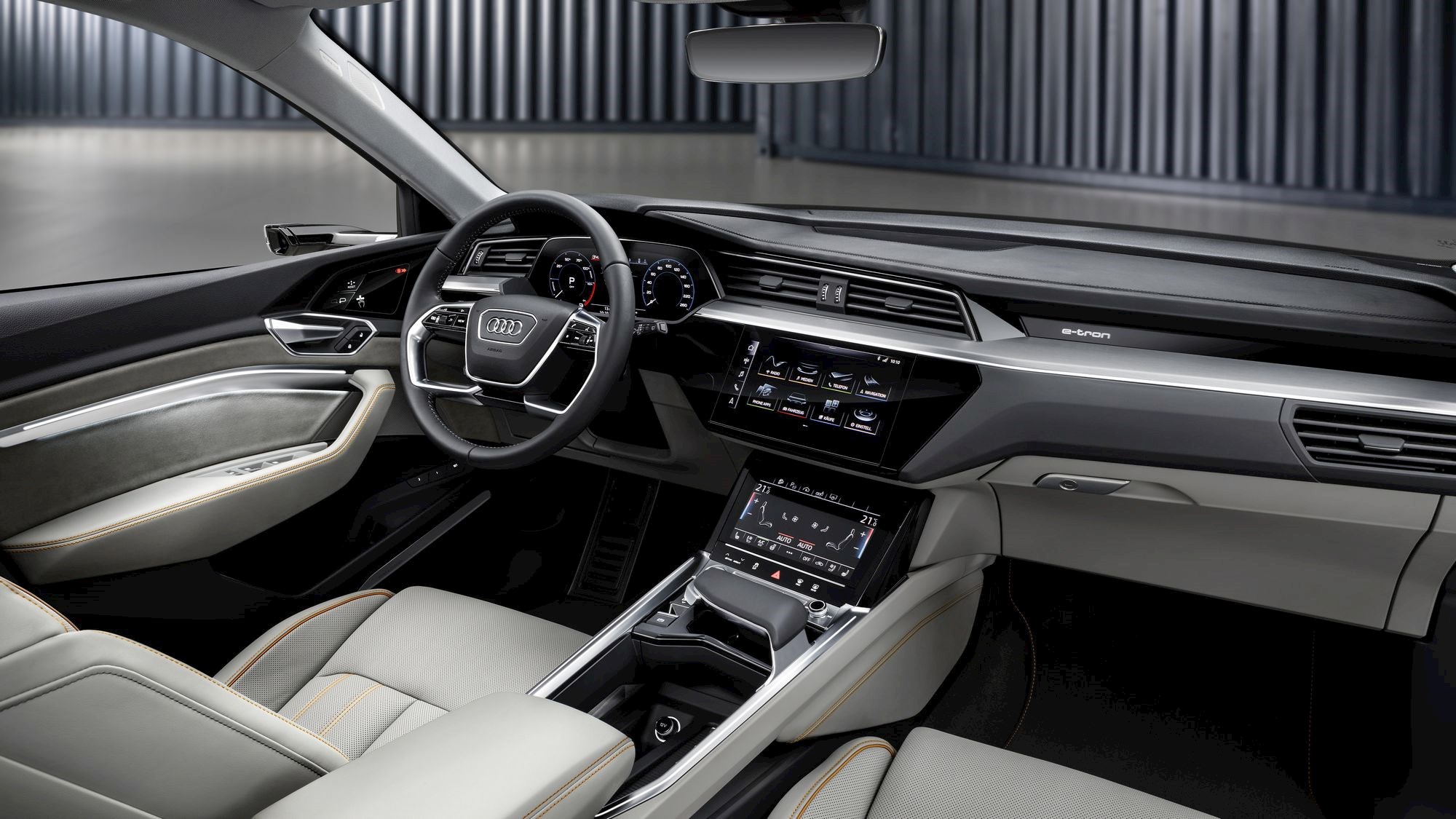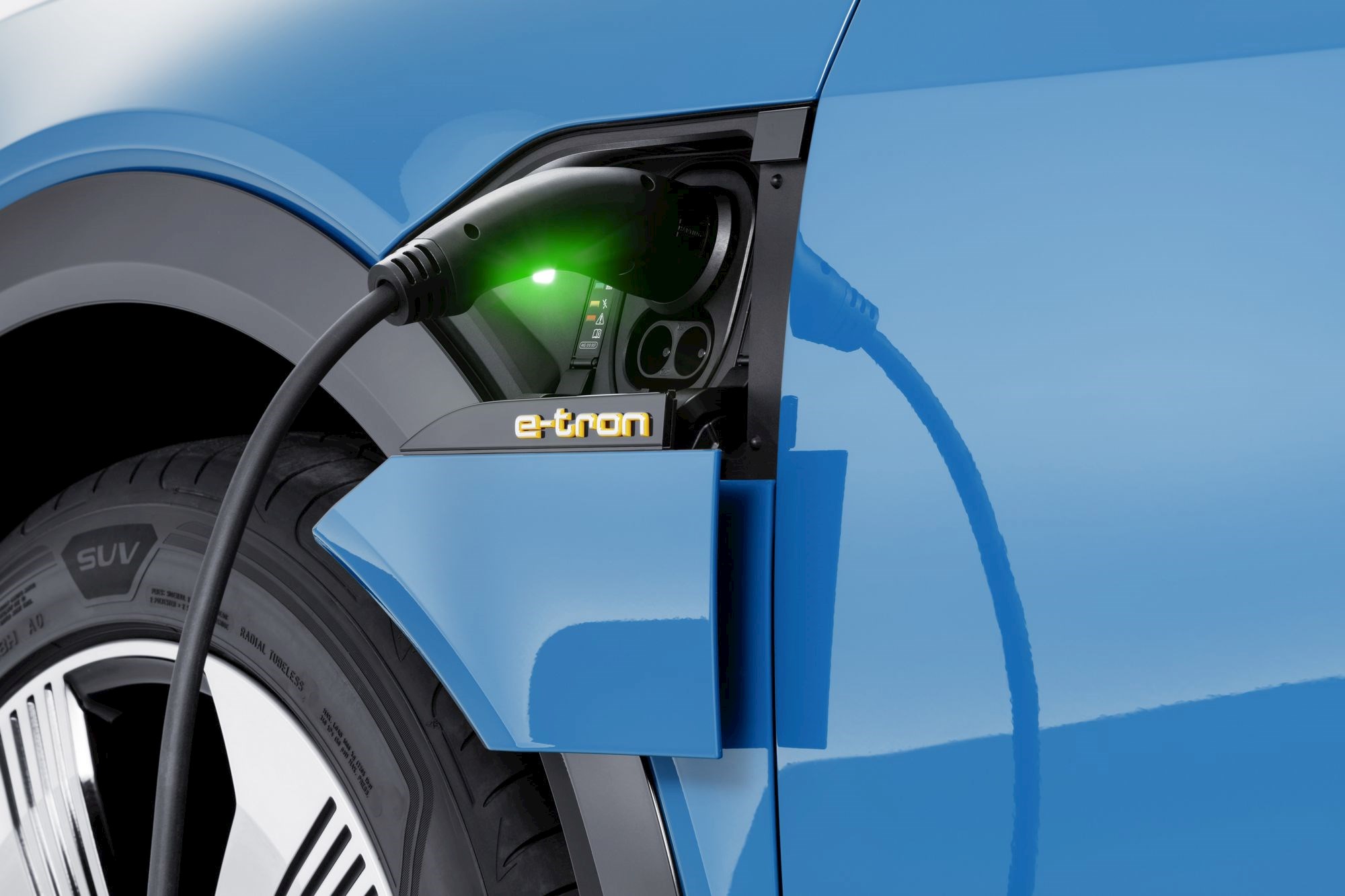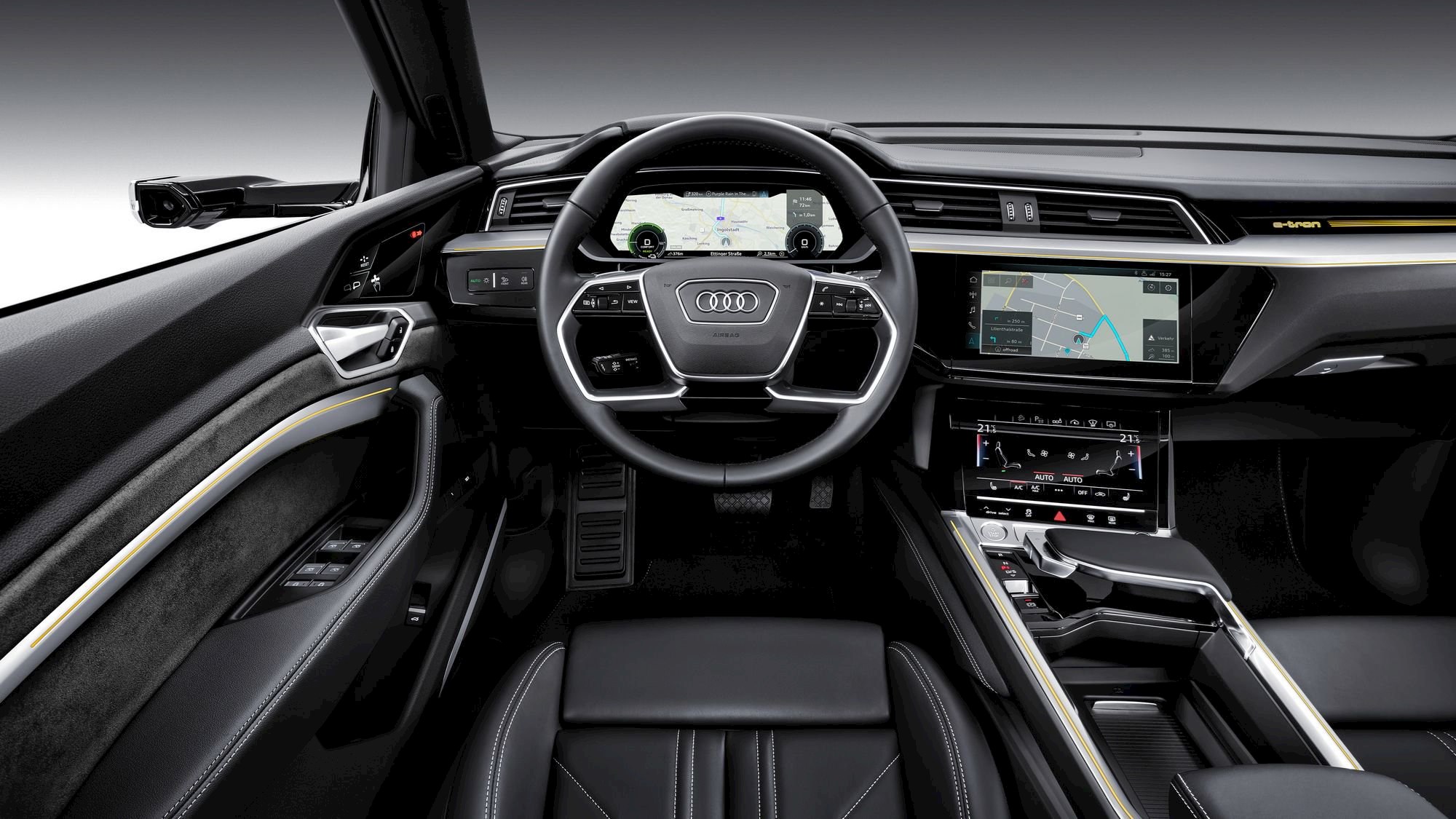Hot on the heels of Mercedes-Benz's first fully electric vehicle, the EQC, long-time arch rivals Audi have revealed their challenger to the crown — the highly anticipated e-tron.
So, to the numbers. The e-tron (yes, it's meant to be all lower case) is said by Audi to deliver a 0–60mp/h (96km/h) time of 5.5 seconds and a top speed of 200km/h. Range hasn't been formally confirmed by Audi, but is said to be between 400km and 450km.
Audi engineer Siegfried Pint has said at the vehicle's launch that a range of 450km is the target, as development of the e-tron continues.
The SUV comes equipped with a 95kWh battery pack, which supports DC 'fast charging' at a rate of up to 150kW at certain high-speed public charging stations. This is an industry first, and allows the e-tron to be charged to 80 per cent in just 30 minutes. Although New Zealand's fast charging network is still rather limited compared to places like America, most owners will likely charge their vehicles at home instead.

How does all of that compare to the EQC? It's evidently pretty close, with the e-tron scoring a higher top speed, but the EQC capable of longer range and quicker acceleration off the mark.
For reference, the Tesla Model X 75D is capable of 417km to a charge, with the big boy P100D rated at 565km on a single charge, with a 0–100km/h time of 5.1 seconds and a top speed of 250km/h.
Back to the e-tron. Its 95kWh battery pack links to two asynchronous motors. Those motors feature a unique regenerative braking that doubles down on energy recuperation when the brakes are engaged while the vehicle is in motion. Audi say that this new tech can improve the e-tron's range by as much as 30 per cent.
The power-train has two modes; 'Boost' mode and a normal mode. The former sees those asynchronous motors develop approximately 300kW and 660Nm, while in its more mild setting it's said to develop 264kW and 561Nm. The 0–96km/h time depletes in normal mode, too — dropping slightly from 5.5 seconds to 6.4 seconds.

In true Audi form, power is sent to all four wheels. The e-tron's four-wheel drive system is electric, and promises to be able to react to conditions, throttle input, loss of traction, and the balance of the long list of driving factors in fractions of a second. It comes coupled with torque vectoring capabilities and a new traction-control system.
The cabin looks much like a lot of Audi's other current (and upcoming) offerings. At 4.9m long, 1.9m wide, and 1.6m high (smaller than a Q7, bigger than a Q5), the e-tron is designed to be a true family wagon. Space is supported by the array of swish leathers and gloss plastics that you expect from an Audi these days.
Among the few next-generation cues inside the e-tron are the 'virtual' wing mirrors. Instead of traditional mirror units, they're cameras — with a display on the inside of each door showing live what the cameras are seeing behind you.

The eagle-eyed would have noticed that 'first' in the story's headline is in emphasis. That's because despite Audi labeling this as their first production EV across all their media, it actually isn't.
That crown actually goes to their Audi R8 e-tron, an electric variant of their R8 supercar that scored only partial success over the year and a bit Audi produced it.
Granted, the e-tron (that's this new one, not the supercar) is probably more important. It is, at least, Audi's first mainstream EV production model. And it also forms the basis for Audi's plans to release 12 new electric vehicles by 2025.

Pricing and arrival dates for the Audi e-tron are yet to be confirmed for New Zealand, but they have been for some other markets. European deliveries are scheduled for early 2019, with the rest of the world expected to follow.
Pricing in the US is said to kick off at US$74,800 (NZ$113,000) for the market's base 'Premium Plus' variant. America's top-spec First Edition model is US$81,800 (NZ$125,000) and comes with 21-inch wheels, additional wood inside, Night Vision Assistant and more.
Audi and Merc join Tesla, Jaguar and its I-Pace, and whatever BMW's Vision iNext becomes in the near future to form the basis of the next generation of EV SUVs.
Those still in doubt over whether the industry is embracing electric won't be for long.

















